
Focus: Energy Transition at What Cost
Author: Nicolas Sioné

Welcome to this new edition of CIGP WM Focus which discusses the ever growing importance of safe havens by taping into the notions of
- Future uncertainty
- Identifying adverse events
- Safe haven vehicles
- The status of treasuries
- Adapting investment strategies

The materials underpinning such transition
Achieving a net-zero-emissions economy by mid-century will require a profound reshuffling of the energy system, with a major shift from carbon-intensive fossil fuels to clean energy sources. As one can imagine, the rebasing of our energy mix and development of alternative clean energy sources will require significant investment and the supply of key raw materials such as metals and REEs (Rare Earth Elements), to the tune of 3 billion tons.
Over the past three years, environmental, macro-economic and geopolitical shocks have put the global energy transition under pressure. High energy prices, risks of energy supply shortages and shortfalls in meeting climate goals now threaten the three imperatives for a smooth energy transition, namely: energy affordability, security, access and sustainability.
If we are to meet climate goals in agreement with the International Energy Agency’s Net Zero by 2050 Roadmap the ramp up and investment requirements to be implemented in the metals industry are huge.
Let’s take as an example a typical electric battery pack. Such an item would require 8 Kg of Lithium, 35 Kg of Nickel, 20 Kg of Manganese and 14Kg of Cobalt, while charging stations require significant amounts of Copper.
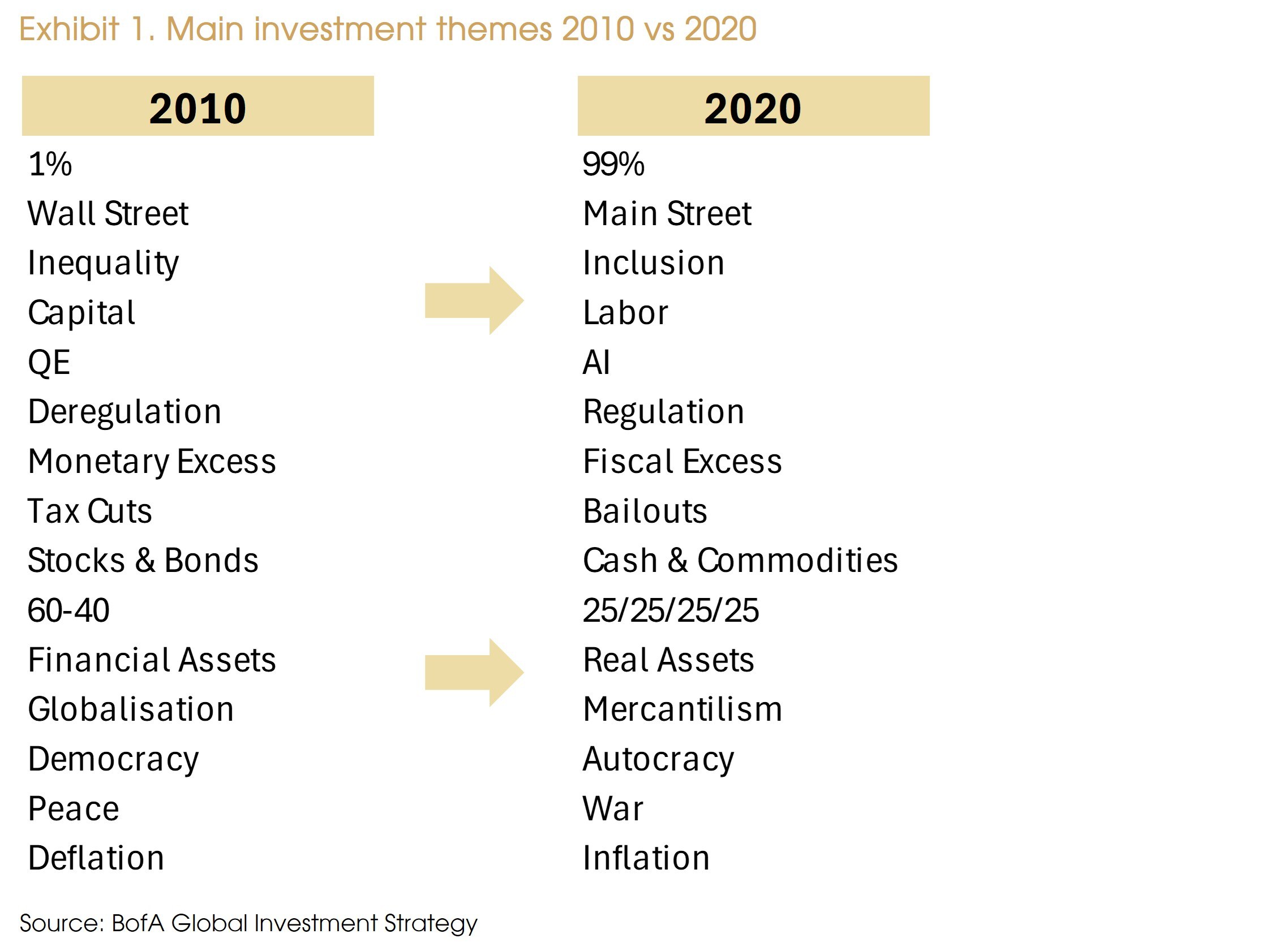
Production and pricing
Metal prices have already seen large increases as economies re-opened ensuing to the Covid crisis, highlighting a critical need to analyze what could constrain production and delay supply responses. Another key aspect to assess will be the availability of such metals and minerals when facing the needs of low carbon technologies.
According to the World Economic Forum (WEF), “replacing fossil fuels with low carbon technologies would require an eightfold increase in renewable energy investments and cause a sizable increase in demand for metals and REEs. However, developing mines is a very lengthy process (often a decade or more)”.
As outlined in the IMF chart below, given the projected increase in metals consumption that a net zero scenario would impose, current production rates of graphite, cobalt, vanadium, nickel, copper and lithium seem vastly inadequate.
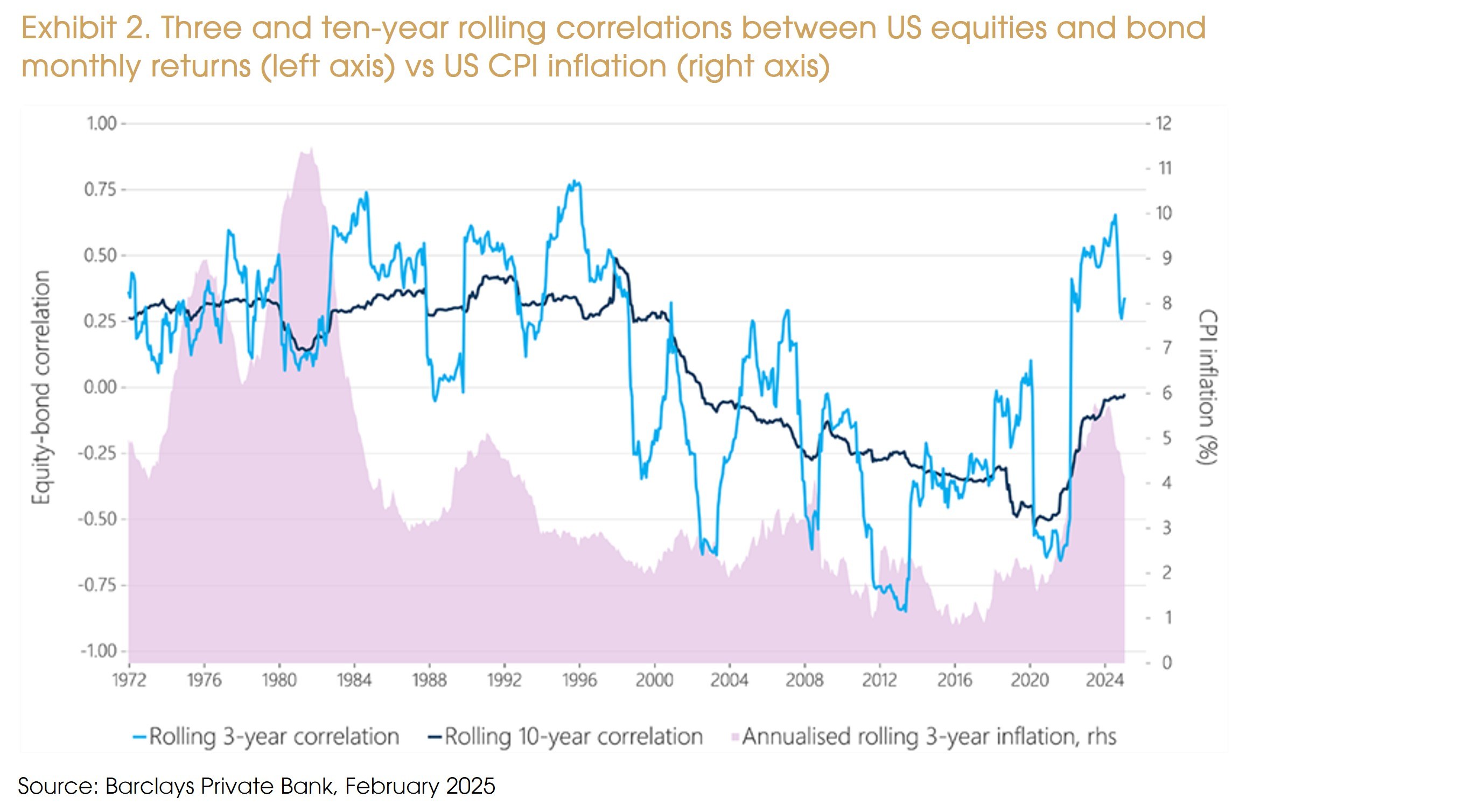
The previous commodities production downturn has led to a significant capacity cut in the sector. Technology advancements in the metal mining sector has been limited, and capacity resumption tends to take some time (e.g., 2-3 years for cobalt miners). Also, as the mining sector is still relatively labor-intensive, labor disputes may emerge upon rebuilding capacity, promoting supply uncertainty. In addition to the above, the focus on capital discipline adopted by mining companies is expected to continue to constrain supply, thus indicating that the sector peak has yet to be reached.
The immediate question that then comes to mind is whether production can be scaled up. According to the WEF, and as production is not thought to be static, existing mineral deposits would allow for greater production through more investment in extraction and exploration, as is the case for graphite and vanadium. For other minerals, remaining deposits could be a constraint on future demand. One must note, the rising trend of metal recycling is also anticipated to contribute to increasing supply. However, at the moment the reuse of scrap metals only occurs on a large scale for copper and nickel, while we are beginning to see traction for scarcer materials like lithium and cobalt.
Complicating factors
Supply in critical metals is generally very concentrated, implying that only the few producers will benefit from growing demand. Conversely, this outlines a clear energy transition risk should investments in production capacity not meet demand, or in case of potential geopolitical risk inside or between producer nations.

Ensuing to a long stream of investments across the globe, China currently stands as the lead global supplier of a wide range of key materials including titanium but also as a leader in terms of specialized processes to mine and refine Rare Earths Elements and other strategic metals. China refines 80% of world’s cobalt, 68% of global nickel and graphite and 60% of the world’s lithium. A dominant role that could impact energy transition should mining operations remain stagnant. Disruptions in producing countries’ institutions, regulations or policies could add further complexity in supply growth.
Prices could reach historical peaks for unprecedented lengths of time – and even delay the energy transition itself.

Financing concerns
When looking at investors’ investment criteria, ESG constitutes somewhat of a challenge considering the mining sector, as current extraction techniques imply environmental impacts that go against environmental preservation and global warming policies. Reduced access to capital for companies with lower ESG ratings could contribute to constrain production. In response, miners are trying to reduce their carbon footprint.
According to the WEF, an S&P Global analysis shows that the ESG average score of the S&P Global 1200 (an index representing about 70% of global stock-market capitalization), stood at 62%, while the metals and mining sector’s score rose to 52% last year from 39 in 2018. Miners are catching up with other sectors to become more attractive from a social responsibility perspective.
Policy implications
Achieving a transformation of the energy transition’s magnitude and complexity requires long term policies, enabling infrastructures, and significant investment. Such a shift will also demand changes in consumers behavior and consumption habits to improve demand efficiency.
In light of the pace at which our energy transition needs to be enacted, the world has no choice but to react in a credible, globally coordinated fashion when implementing climate policies. Such a collegial approach would contribute to direct investment towards the expansion of the metals and REEs supply, aiding our clean energy transition. Reduced trade barriers and export restrictions would allow markets to operate efficiently.
As mentioned prior, investments within the segment are and will be conditioned by policy decisions and their speed of execution. It is unfortunate that still at this stage of urgency, policies are not brought to the market in a globally coordinated fashion. The lack of coordination combined with exogenous geopolitical or macroeconomic factors are detrimental to the energy transition process, as they may hinder mining investments and raise the odds that high metal prices derail the sought after and needed energy transition.
Regulations and policies that accompany energy transition and climate change as a whole need to be robust and stringent enough to drive necessary action and investment. One could believe that for climate commitments to be respected by the various stakeholders, commitments should be legally binding and include enforcement mechanisms to ensure swift implementation and sustainability of such ventures.
Similarly, mobilizing necessary investments from public and private sources requires policy and institutional stability, appropriate de-risking mechanisms, and effective international collaboration to support the investment needs of developing countries.
Are we set to walk the talk?
The world needs more low carbon energy technologies to keep temperatures from rising any further, and the transition could unleash an unprecedented demand for metals. While deposits are broadly sufficient, the needed ramp-up in mining investment and operations could be challenging for certain metals and may be derailed by market or country specific risks.
On the flip side, prices may decrease more than expected if legislative approval and government actions required for the energy transition and infrastructure programs do not materialize as expected.

The need to urgently accelerate the energy transition is clear. The current market scenario, as volatile as it is, presents a unique opportunity to do just that by speeding up energy transition projects and building up resilience in the energy systems. Winning the race requires stakeholders at every level and in every geography to step up and work together on reducing demand for fossil fuels, ramping up clean energy consumption in a way that lays the foundation for a sustainable future that is both inclusive and sustainable. The energy transition, along with increased use of high-end technological products and processes is encouraging capital expenditure by not only China but other countries as well.
Our progression along the sustainability path has nevertheless made us aware that we cannot, a priori, rely exclusively on clean or renewable energies as they stand today. Within the context of this energy transition, nuclear will have to be reconsidered so as to bridge demand away from traditional fossil fuels while ramping up in investment, research and exploitation of renewables sources of clean energy.
Sources: IEA, IMF, IRENA, WEF, CIGP Estimates
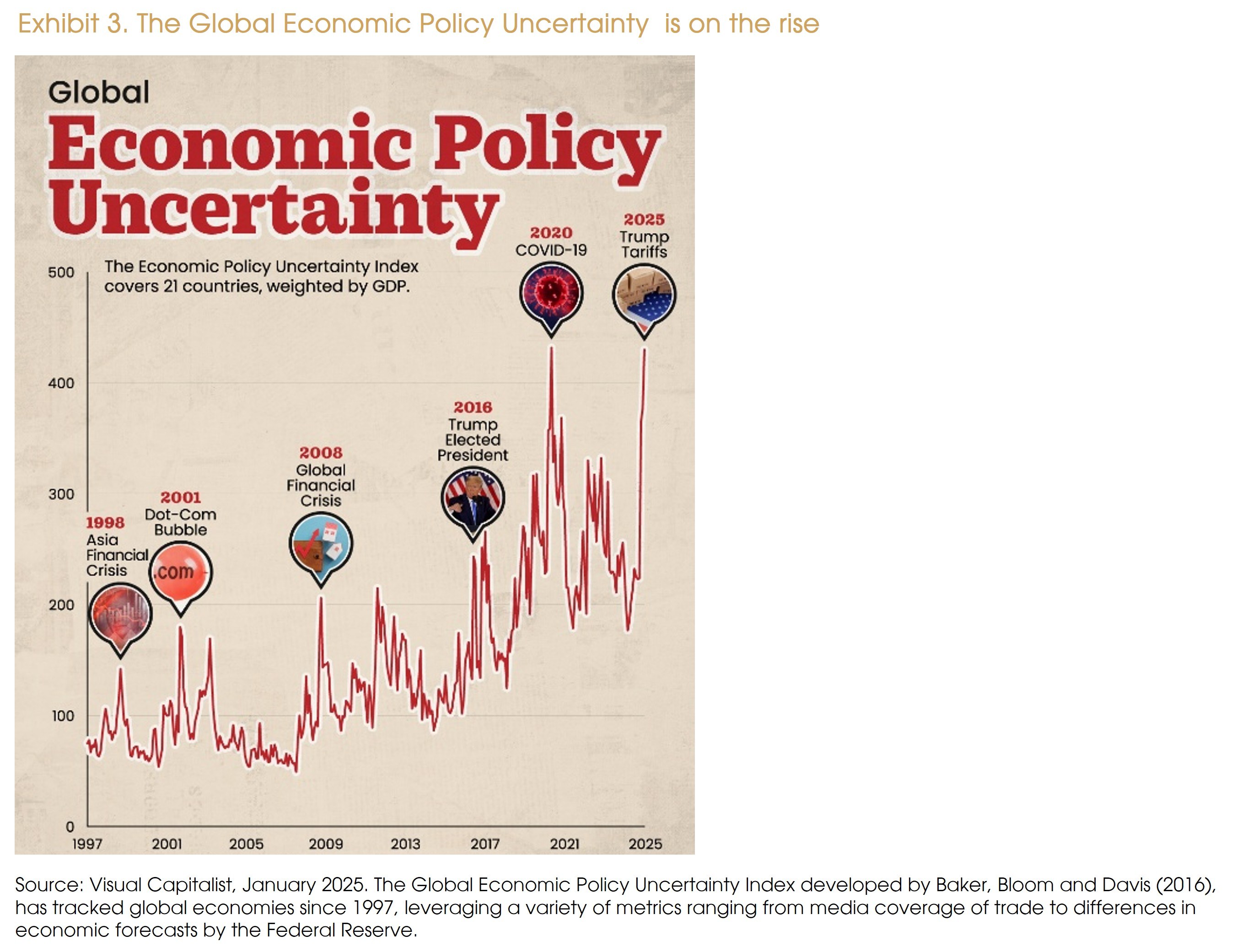
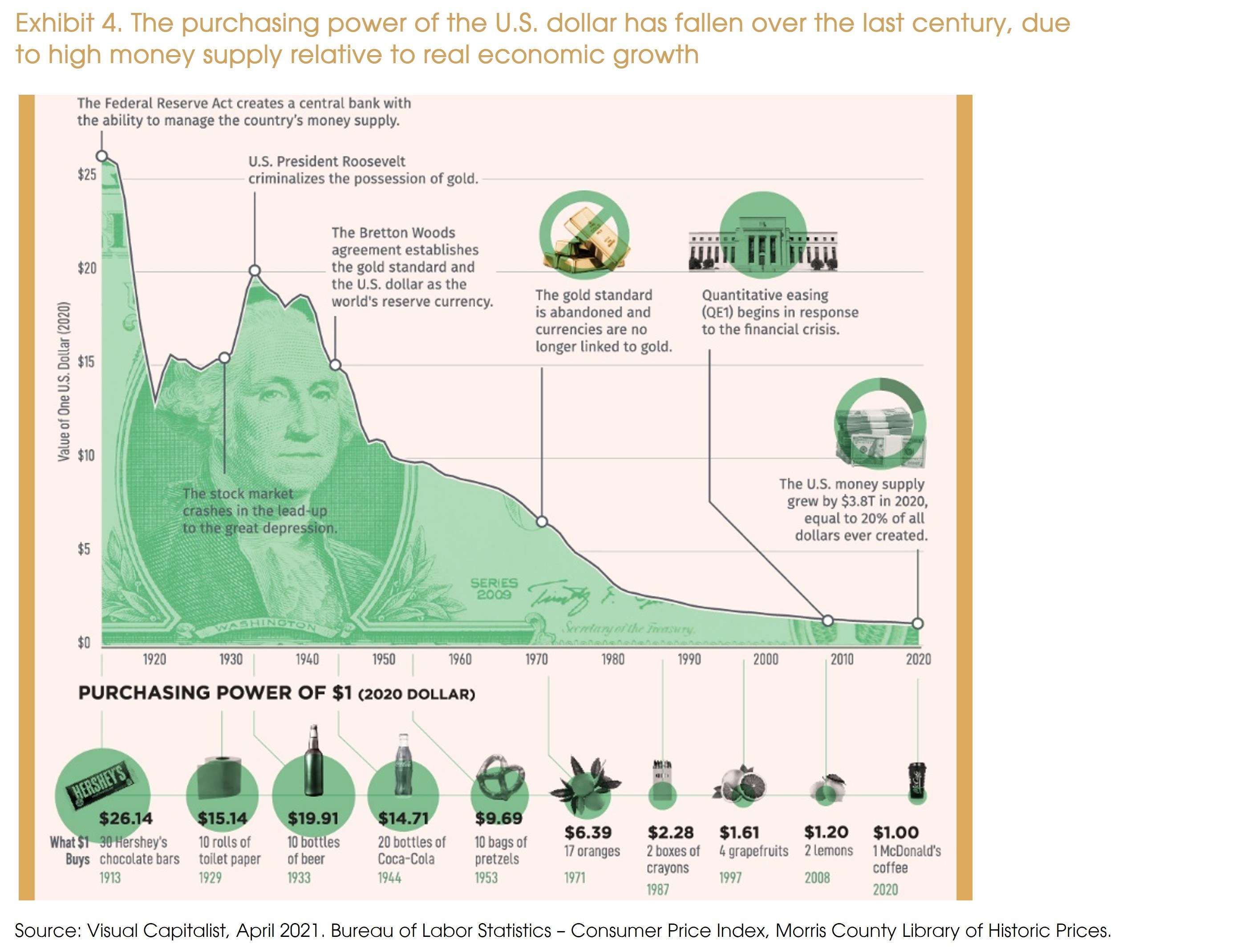
Other public favorites include:
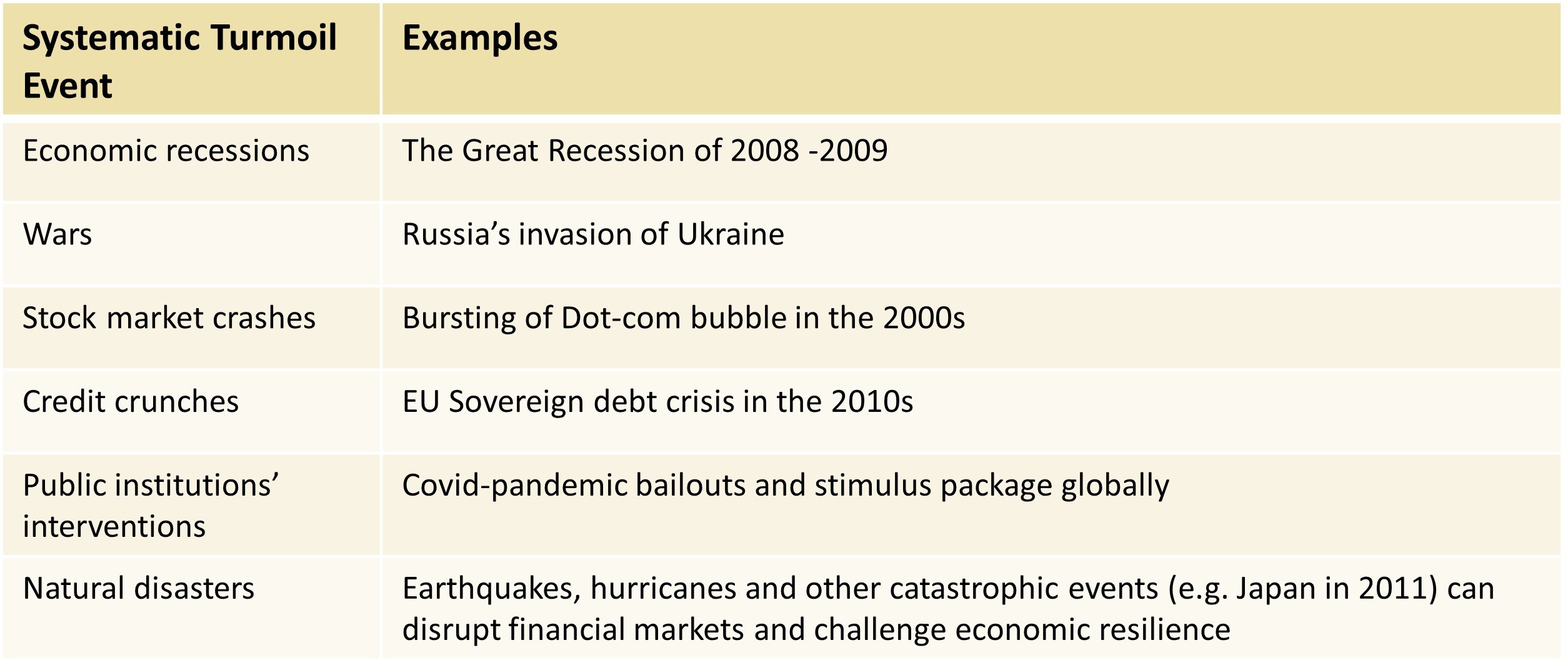

Reviewing Safe Haven vehicles
Safe havens are not one-size-fits-all. This section explores how different instruments function, and how their roles are evolving.
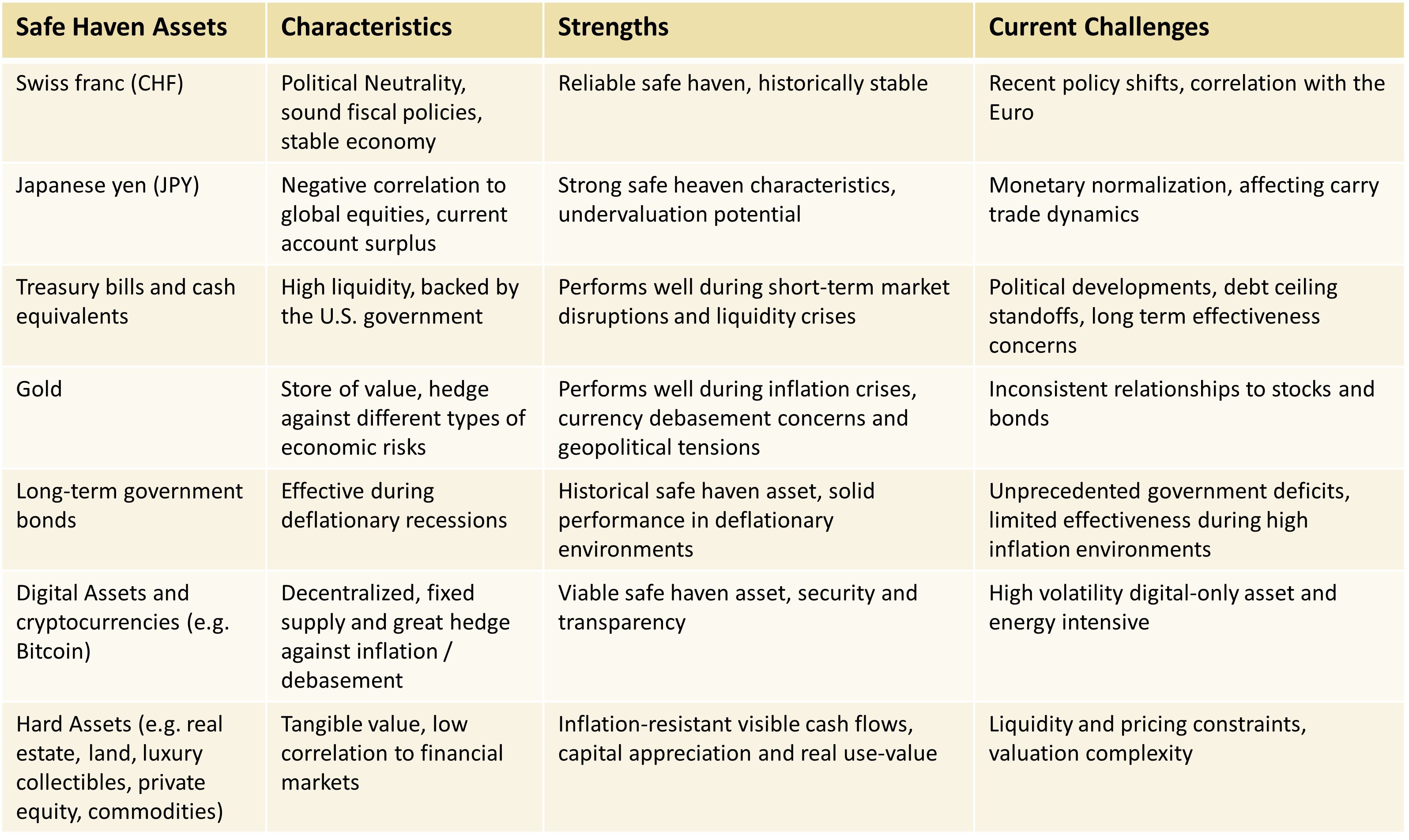
First off we have Safe haven currencies and cash equivalents, highly liquid and stable assets that investors typically turn to first during short periods of market stress. These set of currencies tend to keep their value in times of uncertainty, offering a layer of protection to diversified portfolios.
However, the current economic landscape presents a complex set of challenges for currency allocations as central banks pursue divergent policies, inflation pressures persist in some regions while abating in others, and traditional correlations between asset classes continue to evolve.
- The Swiss franc (CHF): has historically been a reliable safe haven due to Switzerland's political neutrality, sound fiscal policies, and stable economy. However, recent policy shifts by the Swiss National Bank (SNB), which has moved from curbing inflation to addressing downside growth risks, have led to rate cuts, contrasting with Japan's tightening cycle, potentially diminishing the CHF's attractiveness from a yielding perspective. Additionally, the CHF's movements are often correlated with the Euro, making it less idiosyncratic than the Japanese yen (JPY).
- The Japanese yen (JPY): has historically demonstrated strong safe haven characteristics, showing a negative correlation to global equities. However, Japan's transition toward monetary normalization presents a nuanced picture for investors, as the Bank of Japan moves away from its ultra-loose policy stance, potentially affecting the yen's traditional carry trade dynamics. Despite these shifts, the yen maintains several fundamental attributes supporting its protective role, including Japan's persistent current account surplus. Additionally, significant undervaluation based on purchasing power parity models suggests the yen offers both safe haven qualities and appreciation potential.
Moreover, the chart below highlights the significant divergence in the Real Effective Exchange Rates of the Swiss Franc (CHF) and Japanese Yen (JPY) during the 2010s, illustrating that even long-standing correlations can break down over time. In the aftermath of the global financial crisis, Switzerland and Japan adopted contrasting monetary strategies, with Switzerland taking measures to prevent excessive currency appreciation and Japan implementing policies to weaken its currency and boost export competitiveness, thereby challenging the latter's safe haven status.
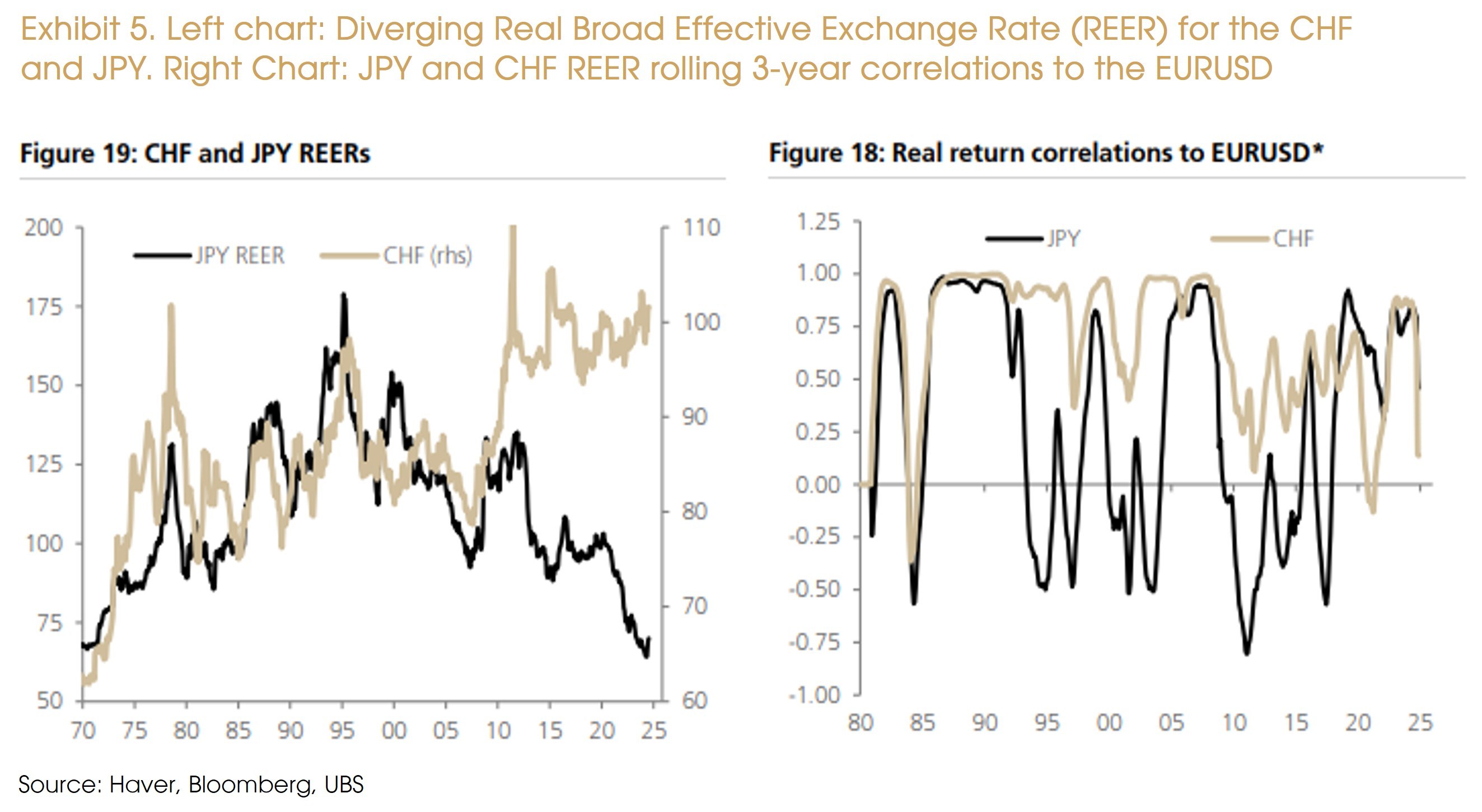
- Treasury bills and cash equivalents[AS1] : maturing in one year or less, have been considered among least volatile investments (relative to traditional financial assets like stocks and bonds), and high liquidity due to their backing by the U.S. government. They perform well during short—term market disruptions and liquidity crises, as seen in the Global Financial Crisis and COVID-19 turbulence. However, recent political developments, such as debt ceiling standoffs, have challenged their risk-free status. This evolving landscape has raised concerns about their long-term effectiveness in protecting purchasing power, especially when compared to other currencies.
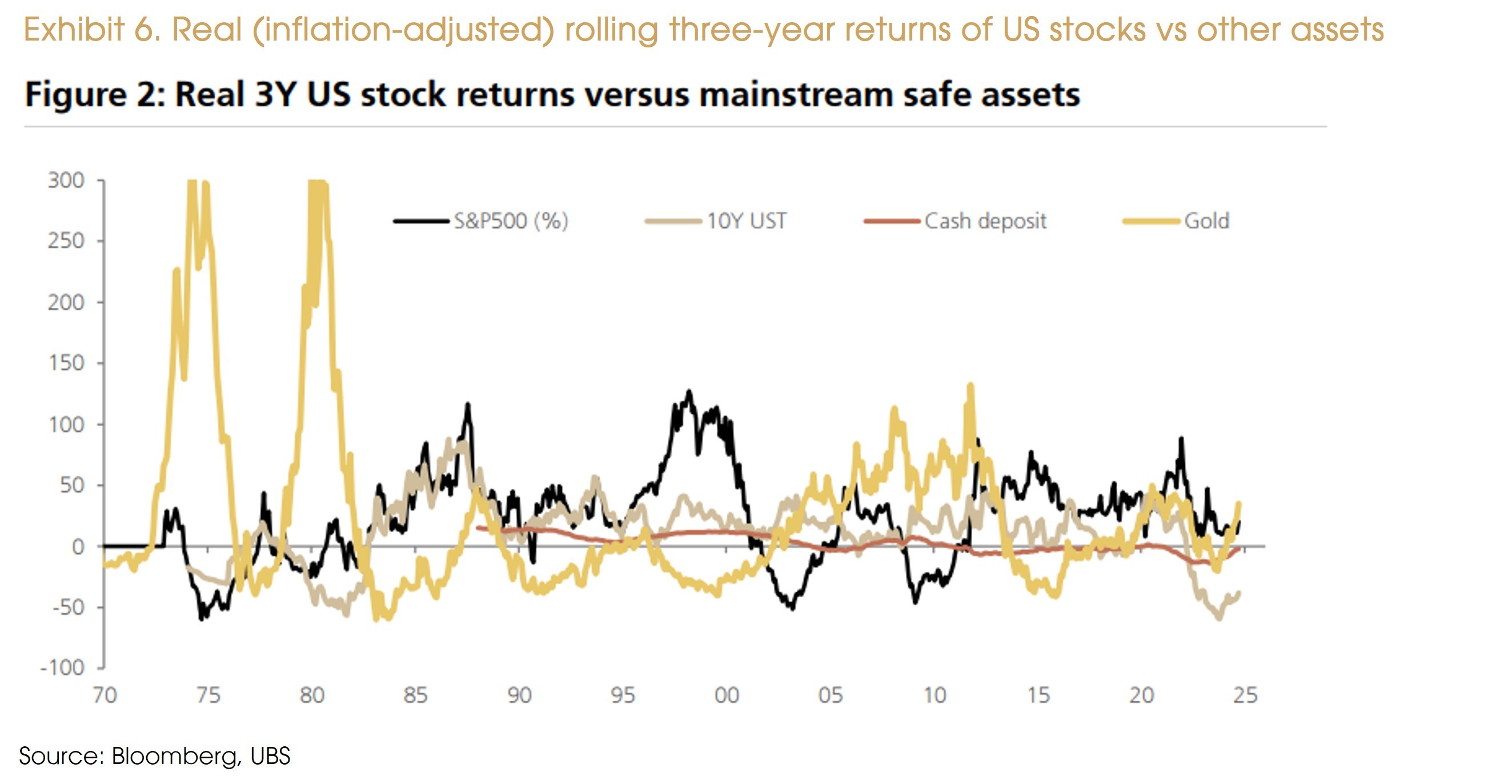
While traditional short-duration safe havens—such as the Japanese yen, Swiss franc and U.S. T-bills—remain foundational, a broader set of non-currency assets has become increasingly vital to building resilient portfolios through time. We now turn to the defining traits of alternative safe haven assets, including gold, government bonds, hard assets and digital alternatives like Bitcoin.
- Gold has been prized as a physical store of value for thousands of years, maintaining its relevance in modern financial markets as a hedge against various economic risks (e.g. fiat currency debasement, geopolitical turmoil and economic uncertainty). It behaves more like currencies than commodities, with inconsistent relationships to stocks and bonds that have become increasingly volatile, performing best during inflation crises, currency debasement concerns, and geopolitical conflicts. Over the last couple of years gold's relationship with traditional market drivers has shifted, reflecting deeper structural changes in the global monetary system: fiscal dominance in developed economies, widespread monetary debasement, and strategic diversification by central banks have all contributed to gold's price strength despite rising real yields.
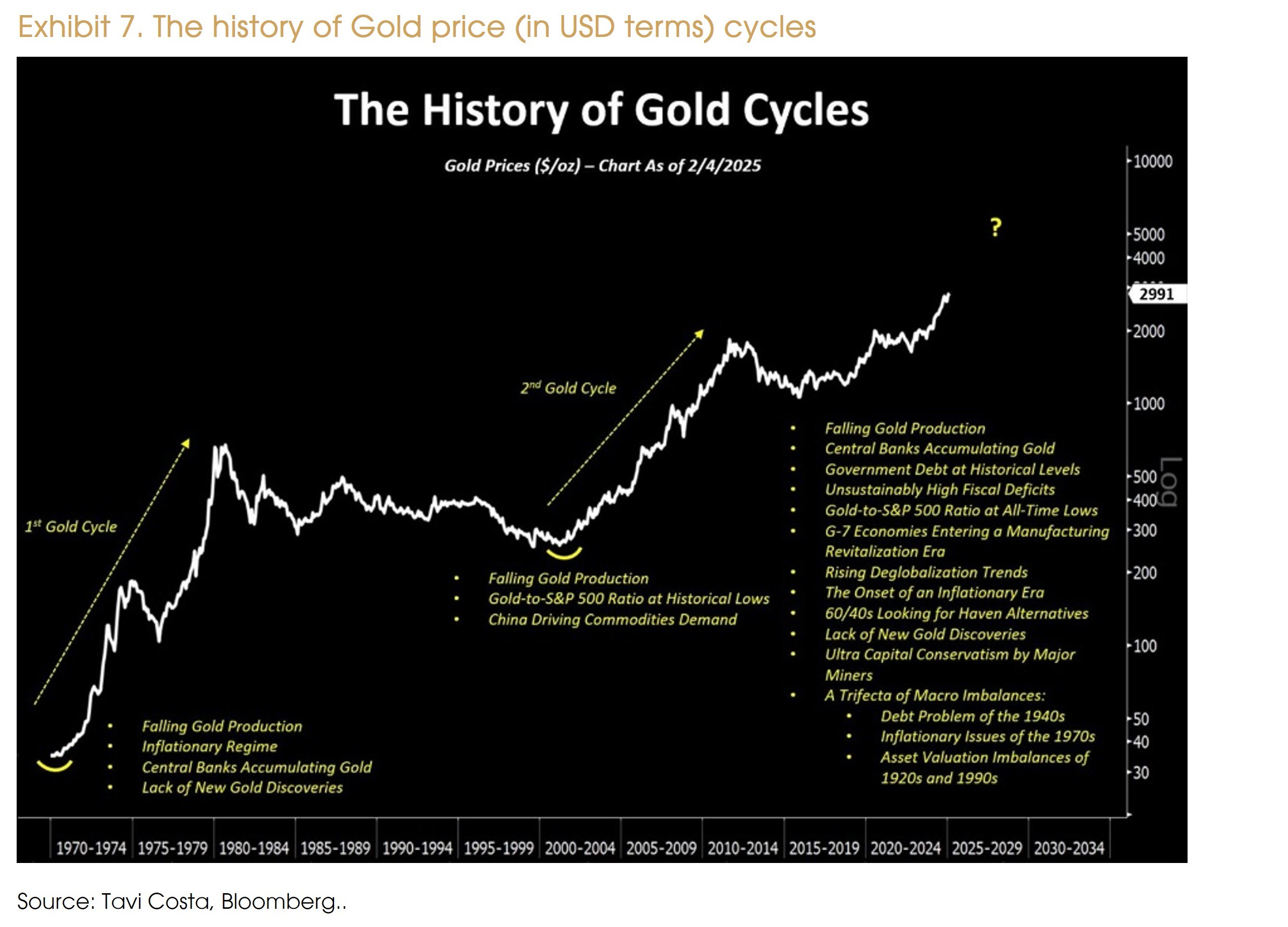
- Long-term government bonds: Such bonds from developed economies have served as cornerstone safe haven assets, historically providing negative correlation to stocks when inflation is low and macro policy credibility is high. Traditional sovereign bonds face headwinds from unprecedented government deficits, limiting their effectiveness during stagflationary environments (i.e. high inflation, low growth). Research demonstrates that bonds provide negative correlation to stocks only under low inflation and high macro policy credibility, conditions that are currently rare. Bonds are most effective during deflationary recessions but vulnerable during periods of fiscal dominance, where monetary policy becomes subordinate to fiscal policy (i.e. government debt), a characteristic now seen in developed markets.
- Digital Assets and cryptocurrencies (e.g. Bitcoin): Despite their positive correlation to stocks (30-40% over the last couple of years) and high volatility, making it less effective as a general market hedge, it is particularly relevant during currency debasement, financial system access restrictions, and scenarios requiring uncensorable value transfer. New digital alternatives like Bitcoin are increasingly being recognized as viable safe haven assets due to their decentralized nature and the trust they inspire in the decentralized system, which enhances security and transparency (i.e. as each transaction is recorded on a public ledger, making it difficult to alter or manipulate data). Additionally, Bitcoin's fixed supply of 21 million coins serves as a hedge against inflation, protecting against the devaluation of currency
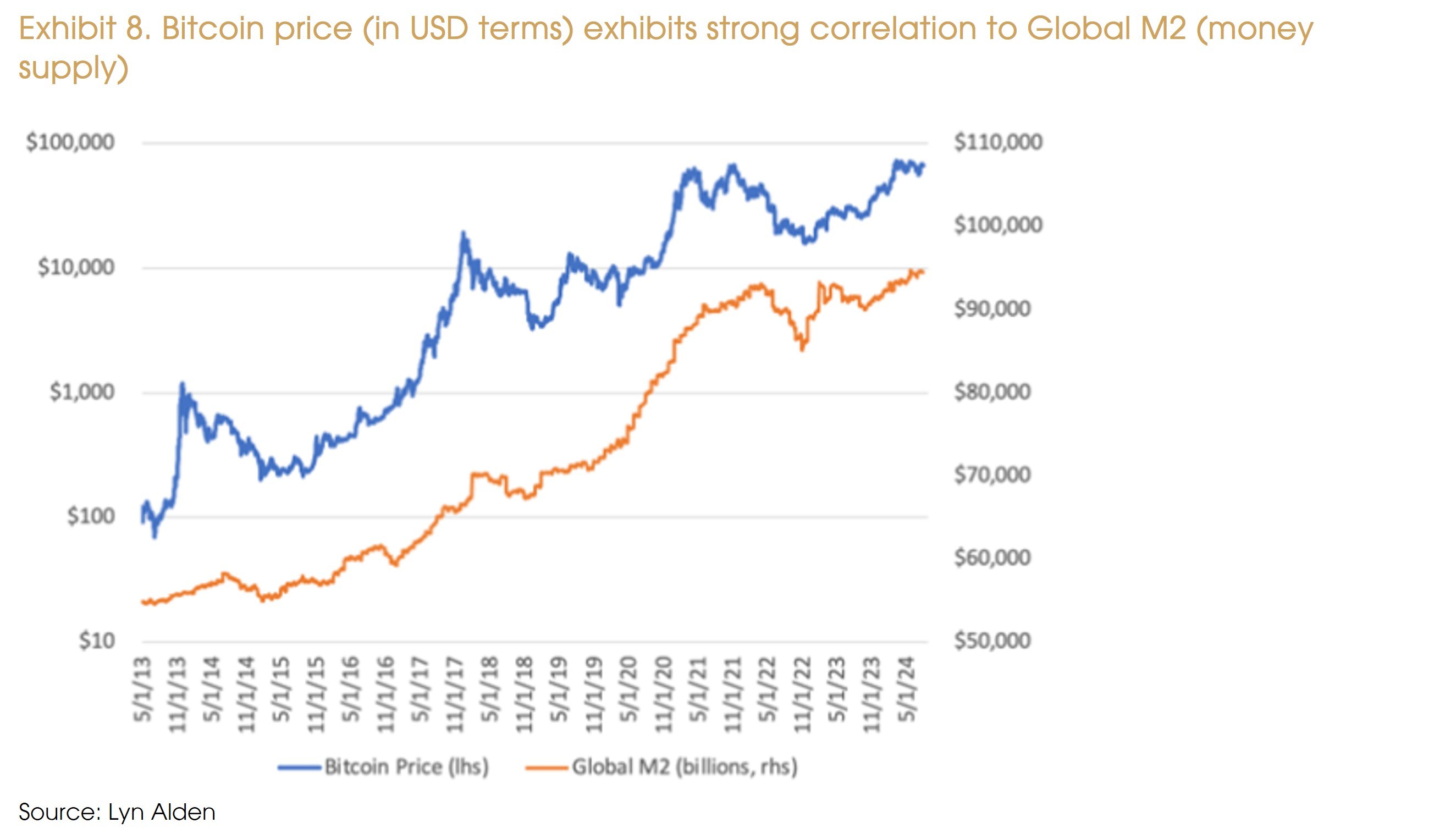
- Hard Assets such as real estate, land, luxury collectibles, hard commodities and private investments, offer tangible value preservation amid monetary uncertainty, combining scarcity with intrinsic utility. Real estate and land (e.g. forestry, water, farmland) provides inflation-resistant, visible cash flows and capital appreciation through time. Luxury collectibles like rare watches and limited-edition sports cars have also outperformed traditional assets, with auction prices for vintage timepieces rising strongly as of late, driven by finite supply and growing high-net-worth discretionary demand. Commodities serve as effective safe haven assets during supply-driven shocks, offering strong diversification benefits, especially in regimes marked by restrictive interest rates, geopolitical tensions, and inflationary pressures. Private equity investments in infrastructure and renewable energy projects deliver dual benefits of stable yields and inflation—linked revenue streams, with core infrastructure funds also generating solid double digit annualized returns over the last decades. While these assets face liquidity constraints and valuation complexity, their low correlation to financial markets and resistance to monetary debasement make them compelling complements in diversified safe—haven portfolios.

Reassessing the Safe Haven status of U.S. Treasuries
The traditional view of U.S. Treasuries as the ultimate safe haven asset is increasingly being called into question, as political brinkmanship and structural market shifts undermine their “risk—free” reputation. Recent market volatility has revealed cracks in the Treasury market's foundation, with long—dated Treasury yields surging over 65 basis points in just three trading days during April's 2025 trade tariff announcements, even as stock markets plunged—a reversal of the typical inverse relationship between risky and safe assets.
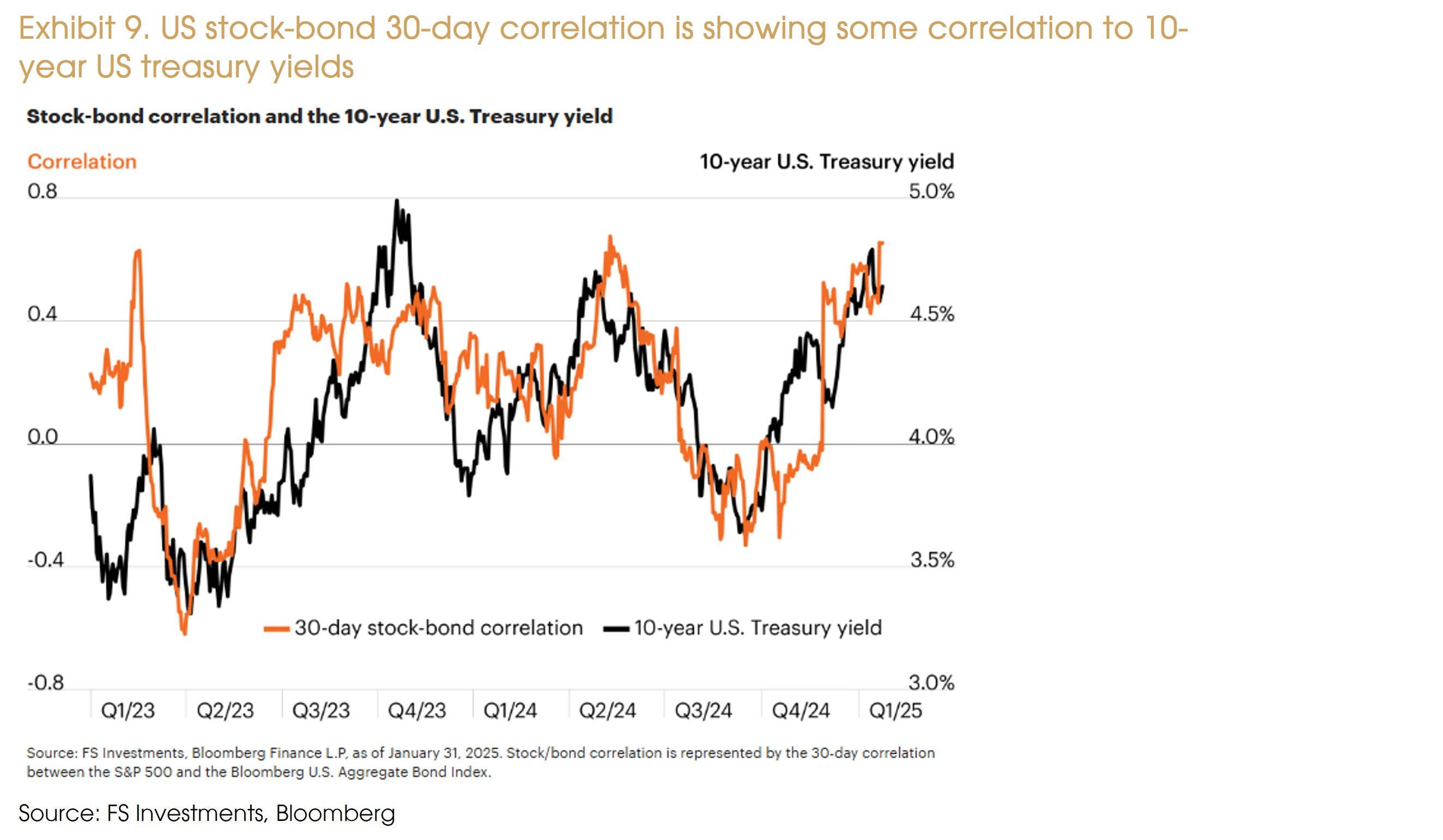
In addition to the ongoing expansion of the money supply—fueled by the Federal Reserve’s accommodative stance—the upcoming debt ceiling debate, scheduled for later in 2025, follows the Department of Government Efficiency’s (DOGE) disappointing delivery of just $100-200 billion in savings, falling well short of the originally promised $2 trillion. Compounding the monetary and fiscal challenges is the urgent need to refinance nearly $9 trillion in maturing U.S. Treasuries this year, most likely at significantly higher interest rates. Additionally, shifts in global geopolitics and trade dynamics have altered the profile of Treasury buyers. Over the past two decades, demand has gradually transitioned from “obligated buyers” such as foreign central banks to “discretionary buyers” like mutual and hedge funds. These evolving dynamics contribute in our view to heightened uncertainty, reflected in the rising term premium—the extra yield investors demand for holding longer—term bonds—which now underpins the elevated real debt—servicing costs of 4–5% in the United States (amongs the highest in the OECD)
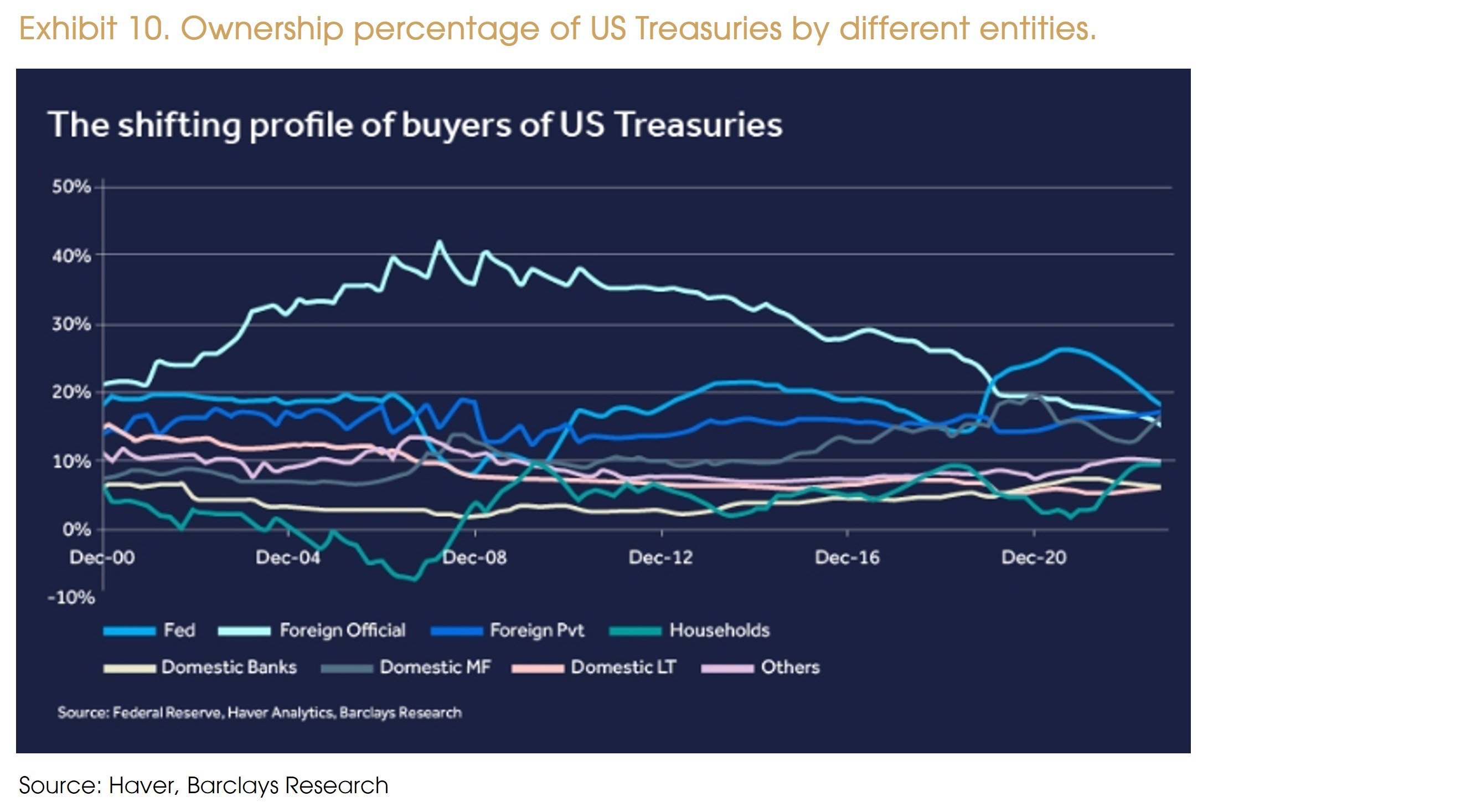
This marks a fundamental shift in asset behavior, illustrated by the declining volatility of traditionally “riskier” assets, such as Bitcoin, whose 30-day realized annualized volatility (yellow line, in the chart below) has steadily fallen over the past three years, coinciding with the onset of global inflation. In contrast, the annualized volatility of U.S. Treasuries has been increasing, as evidenced by the iShares 7–10 Year Treasury Bond ETF (black line) over that same period.
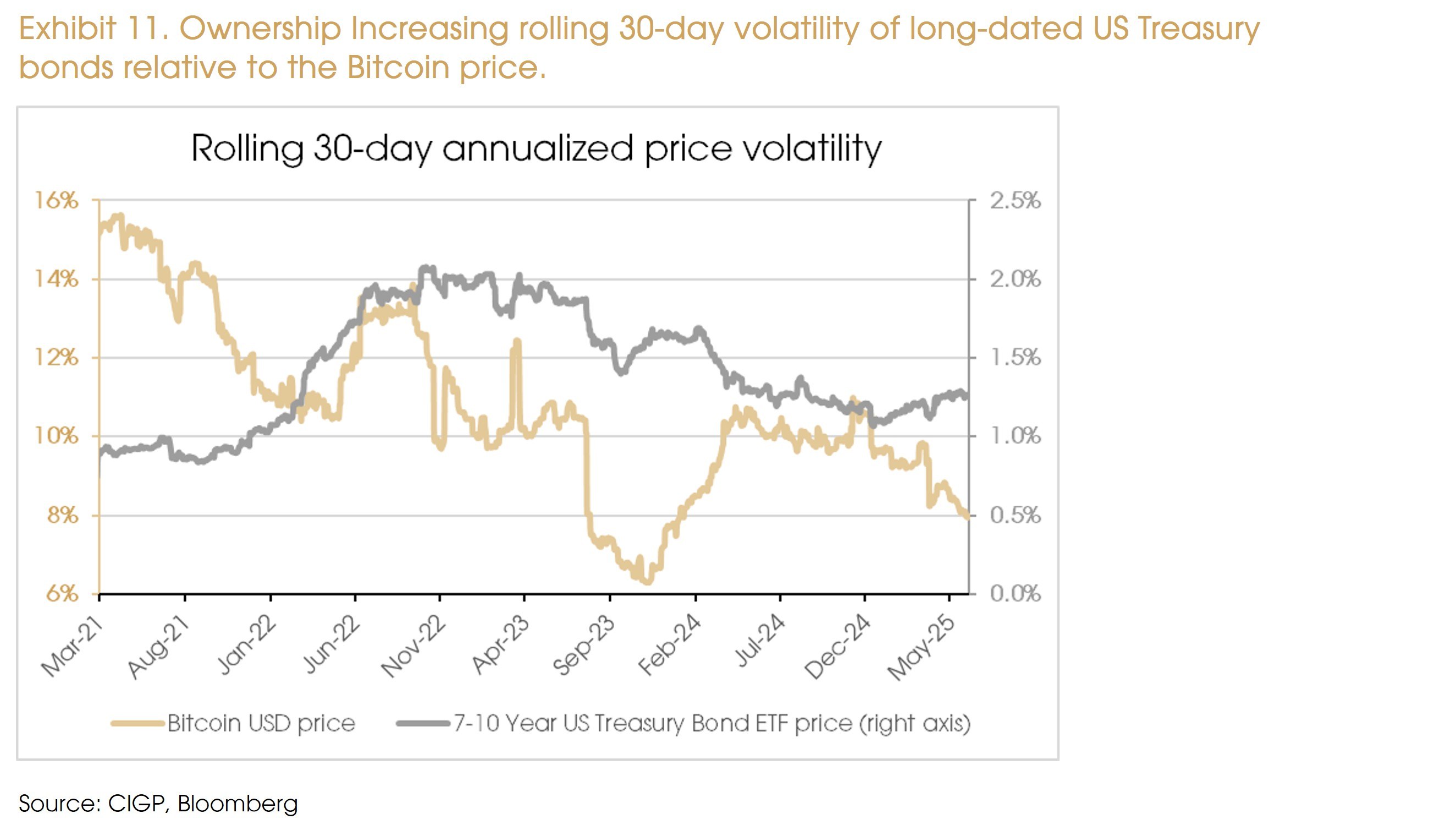
This divergence suggests to us that: investors may be re-evaluating what truly constitutes “safety” in today’s market environment.
Although short-term Treasury bills have retained their stability and liquidity during periods of market stress, their relative strength—reflected in the DXY index—is increasingly vulnerable as global trade rules are renegotiated and the U.S., as the world’s largest trade deficit nation, faces mounting structural imbalances.


Adapting our investment strategies for uncertain times
As we navigate the complexities of the global economic landscape, it is essential to recognize the critical importance of safe havens and portfolio diversification in the face of geopolitical uncertainty, distrust in public institutions, fiat currencies debasement and other systemic turmoils.
The evolving economic environment necessitates that investors adapt their strategies, through a Total Portfolio approach (TPA), to include a variety of safe haven and alternative assets, such as gold, commodities, short—duration instruments and digital assets. By understanding the unique characteristics and performance of these assets, we can construct more resilient portfolios that offer protection against market volatility and economic uncertainties. This approach ensures that our portfolios are better equipped to safeguard purchasing power over time and during periods of turmoil.
Through careful selection and management of these diverse assets, we can achieve a balanced and secure investment strategy that addresses both current and future uncertainty.
Disclaimer
This document is issued by Compagnie d’Investissements et de Gestion Privée Group (“CIGP”), solely for information purposes and for the recipient’s sole use and shall not be further transmitted to third parties. You have been provided with this document in your capacity as Professional Investor(s) as defined in Part 1 of Schedule 1 to the Securities and Futures Ordinance (Cap. 571). If you do not meet the Professional Investor criteria, please disregard this document.
CIGP does not assume responsibility for, nor make any representation or warranty (express or implied) with respect to the accuracy or the completeness of the information contained in or omissions from this document. None of CIGP and their affiliates or any of their directors, officers, employees, advisors, or representatives shall have any liability whatsoever (for negligence or misrepresentation or in tort or under contract or otherwise) for any loss howsoever arising from any use of information presented in this document or otherwise arising in connection with this document. This document may not be reproduced either in whole or in part, without the written permission of CIGP. Past performance is not a guarantee of future results. There can be no assurance that forecasts will be achieved. Economic or financial forecasts are inherently limited and should not be relied on as indicators of future investment performance.
This document is not a prospectus and the information contained herein should not be construed as an offer or an invitation to enter into any type of financial transaction, nor an act of distribution, a solicitation or an offer to sell or buy any investment product in any jurisdiction in which such distribution, offer or solicitation may not be lawfully made. Certain services and products are subject to legal restrictions and cannot be offered worldwide on an unrestricted basis and/or may not be eligible for sale to all investors. Unless cited to a third-party source, the information in this document is based on observations of CIGP. The information provided is based on numerous assumptions. Different assumptions could result in materially different results. Before acting on any information you should consider the appropriateness of the information having regard to your particular investment objectives, financial situation or needs, any relevant offer document and in particular, you should seek independent financial advice. All securities and financial product or instrument transactions involve risks, which include (among others) the risk of adverse or unanticipated market, financial or political developments and, in international transactions, currency risk. The contents of this report have not been and will not be approved by any securities or investment authority in Hong Kong or elsewhere.
CIGP acts as an agent when recommending or distributing investment products. The product issuer is not an affiliate of CIGP. CIGP is an independent intermediary, because: (i) we do not receive fees, commissions, or any other monetary benefits, provided by any party in relation to our distribution of any investment product to you; and (ii) we do not have any close links or other legal or economic relationships with product issuers, or receive any non-monetary benefits from any party, which are likely to impair our independence to favour any particular investment product, any class of investment products or any product issuer. Neither us nor our group related companies shall benefit from product origination or distribution from the issuers or providers, whether in monetary or non-monetary terms. We do not provide any discount of fees and charges.


